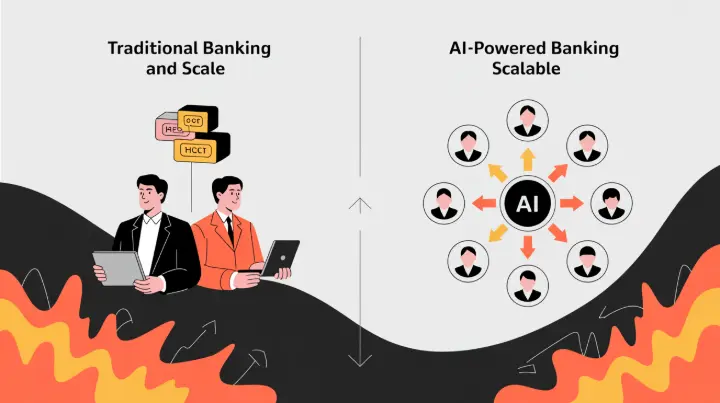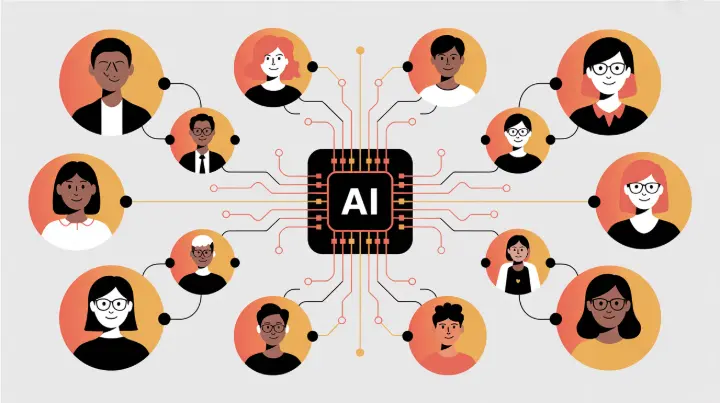The financial services industry has always been built on relationships, but those relationships are changing. For decades, acquiring new customers meant expensive marketing campaigns, lengthy approval processes, and armies of relationship managers.
The cost of bringing a single customer through the door has spiraled upward while conversion rates have stubbornly remained low. But a fundamental shift is underway, one that promises to transform how banks, investment firms, and fintech companies attract and onboard their customers.
The traditional model of customer acquisition in finance is breaking under its own weight. Financial institutions pour millions into advertising campaigns across every conceivable channel, from television spots during prime time to sponsored posts flooding social media feeds.
Yet despite this massive investment, the needle barely moves on actual customer conversion. Prospects click, browse, and then vanish into the digital ether, leaving marketing teams to wonder where their budget disappeared.
The Hidden Costs Drowning Financial Firms
When a potential customer does show interest, they often encounter a gauntlet of obstacles that would test anyone's patience.
The onboarding journey typically involves navigating through page after page of forms, each demanding information that feels redundant after the third repetition. Know Your Customer verification processes, while necessary for compliance, introduce delays that can stretch from days to weeks.
Document requests ping back and forth between customer and institution, with each iteration increasing the likelihood that the prospect will simply give up and look elsewhere.
Meanwhile, the human infrastructure required to support customer acquisition grows more expensive by the year. Relationship managers, financial advisors, and customer service representatives represent a significant fixed cost that doesn't scale well.
For high net worth clients, the personal touch of a dedicated advisor makes economic sense. But for mass market customers, the math simply doesn't work. Financial firms find th
emselves caught between wanting to provide quality service and needing to keep costs under control.

When Speed Becomes Your Competitive Advantage
In today's digital economy, time operates on a completely different scale than it did even five years ago.
A lead generated at two in the afternoon might be completely cold by the next morning. Customers expect immediate responses, instant gratification, and seamless experiences.
When they have questions about opening an account or applying for a loan, waiting twenty four hours for a callback feels like an eternity. They'll simply move to a competitor who responds faster, even if that competitor's offering is marginally inferior.
The communication strategies many financial firms employ only compound these problems. Generic email blasts advertising products that have no relevance to the recipient's actual financial situation do more harm than good. A recent college graduate receives promotional materials about estate planning.
A retiree gets pitched on student loan refinancing. This scattershot approach doesn't just fail to convert, it actively damages the brand and increases the likelihood that future communications will be ignored or filtered directly to spam.
The Compliance Paradox Slowing Everything Down
Regulatory compliance, while absolutely essential, creates yet another layer of friction in the customer acquisition process. Every application must be reviewed, every document verified, every risk assessed. When these tasks are performed manually, they introduce delays and create bottlenecks that slow the entire pipeline. Compliance teams become overwhelmed during busy periods, leading to even longer wait times. The irony is that these necessary protections designed to safeguard both customer and institution end up driving potential customers away before the relationship even begins.
Enter the Always On Digital Relationship Manager
Artificial intelligence agents are fundamentally restructuring how financial institutions approach customer acquisition.
Unlike human employees who work shifts and take vacations, these digital assistants maintain constant availability. A prospect browsing mortgage rates at midnight receives the same quality of engagement as someone inquiring during business hours.
Questions get answered immediately, concerns are addressed in real time, and the momentum that leads to conversion never gets a chance to dissipate.
This isn't just about faster response times, though that matters tremendously. AI agents bring a level of personalization that was previously impossible to achieve at scale.
By analyzing patterns in financial behavior, demographic information, and subtle intent signals embedded in how prospects interact with digital touchpoints, these systems can craft communications and offers that actually align with what each individual needs right now.
The recent graduate gets guidance on building credit and starting their first investment account. The retiree receives information about wealth preservation and income strategies. Relevance replaces randomness.

Onboarding Without the Pain
The onboarding experience transforms completely when AI agents take the lead. Instead of confronting a wall of forms and wondering where to start, new customers engage in natural conversations that guide them through each step.
The agent explains why certain information is needed, helps gather required documents, and provides real time feedback on application completeness. What once felt like bureaucratic torture becomes a guided journey with a helpful companion.
These AI systems can simultaneously handle thousands of conversations, each one maintaining the context and continuity that makes customers feel heard and valued. The scalability is remarkable.
A financial institution can serve ten customers or ten thousand with the same level of attentiveness, no additional hiring required.
The economics shift dramatically when customer acquisition no longer demands a proportional increase in human headcount.
Focusing Resources Where They Matter Most
Not every lead deserves equal attention, and AI agents excel at making these distinctions.
By scoring prospects based on likelihood to convert, potential lifetime value, and fit with the institution's ideal customer profile, these systems ensure that resources get deployed efficiently.
Marketing spend flows toward the channels and campaigns that generate the highest quality leads. Human advisors focus their time on the complex situations and high value relationships where their expertise truly makes a difference. Everything else gets handled smoothly by AI, at a fraction of the cost.
Compliance Becomes an Accelerator Rather Than a Brake
Perhaps most impressively, AI agents transform compliance from a bottleneck into a competitive advantage. Document verification happens automatically, with intelligent systems scanning uploads for completeness and authenticity. Risk flags get identified and escalated in real time rather than discovered days later during manual review.
Regulatory requirements are built directly into the workflow, ensuring adherence without requiring constant human oversight. The result is faster approvals, fewer errors, and happier customers who didn't have to wait an eternity for their application to be processed.
The Economics That Change Everything
When all these improvements combine, they flip the fundamental economic equation that governs customer acquisition in finance. The cost to acquire each customer drops significantly as AI handles the bulk of engagement, qualification, and onboarding tasks.
Simultaneously, the experience improves so dramatically that customer satisfaction rises and lifetime value increases. Financial institutions find themselves in the enviable position of spending less to acquire customers who end up being more valuable and loyal over time.
Tomorrow's banker isn't sitting in a branch office scheduling appointments and shuffling paperwork.
They're an AI agent in your pocket, available whenever you need them, speaking to you about what actually matters to your financial life, and handling the tedious compliance requirements seamlessly in the background.

This digital banker never gets impatient, never has a bad day, and never forgets the details of your previous conversations.
The financial firms that embrace this transformation early will find themselves with a decisive advantage. While competitors continue pouring money into inefficient acquisition strategies, these forward thinking institutions will be acquiring customers at lower costs while delivering superior experiences.
They'll win the trust of a new generation that expects digital first interactions and has no patience for the friction that characterized traditional financial services.
The revolution in customer acquisition isn't coming. It's already here, quietly reshaping the competitive landscape of financial services. The question isn't whether AI agents will redefine how financial institutions grow their customer base.
The question is which firms will adapt quickly enough to thrive in this new reality, and which will be left behind wondering why their traditional playbooks stopped working.
Retry